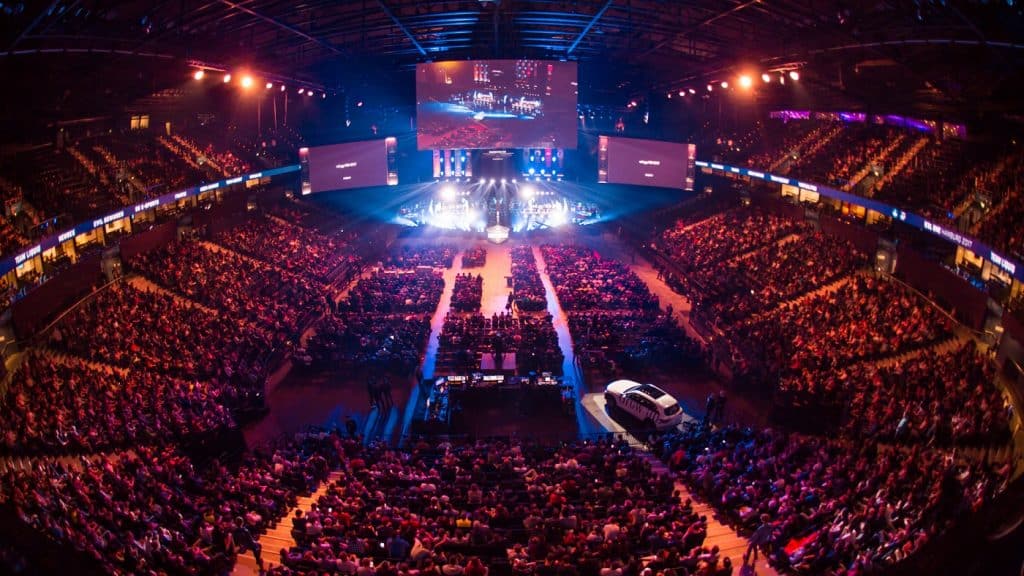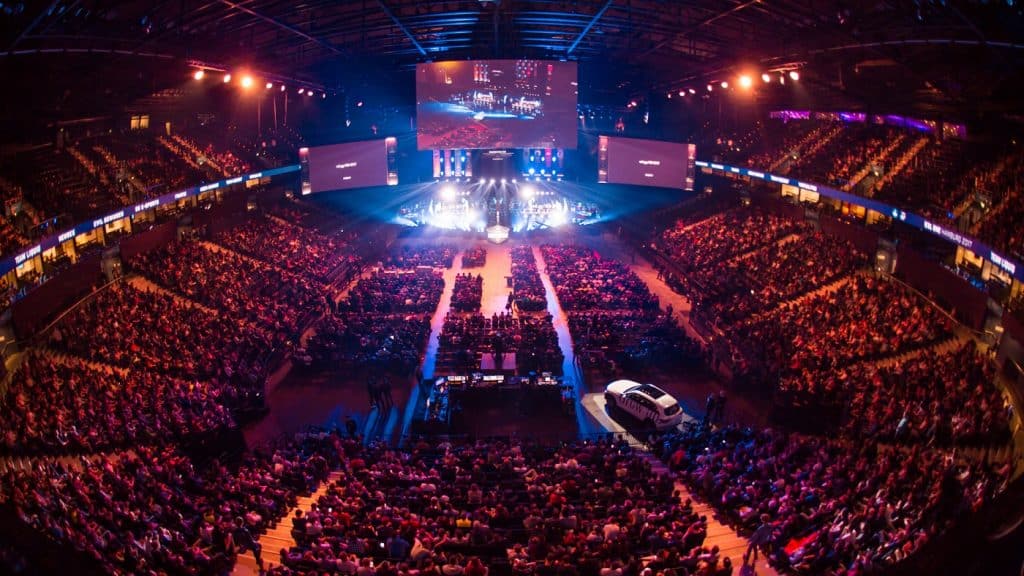

Who marketing says, also has to say eSports — two fundamentally different things, yet intimately connected. eSports as a sport of the future has changed the marketing world a lot, but even without it, marketing could hardly survive. As present, as the gaming sport is, meanwhile, one often forgets how small the beginnings of eSports ever were. The size and relevance, which he now has, were not always given the best will. This was discussed among others at the eSports Exchange by Fuse under the panel “Entering eSports – now and then”, where we were also on site. Based on this panel, we show you the small beginnings of the virtual sport, up to the arena-filling event spectacle, which it is now – and how eSports has made it so far.
The local gambling – eSports then
Many do not realize how long eSports has accompanied us. The beginnings were small and insignificant and can already be traced back to games like Pong – a game that is nothing more than virtual table tennis and was published in 1972. Little and small tournaments to the game were organized, in which candidates competed locally against each other. Arcades also contributed their unimaginable share to the development of eSports. Many arcade machines had a so-called high score system. Say players could earn points – and the one who scored the most points would land at # 1 in the machine’s ranking.

Already at arcade machines opened up the competitive potential of video games. © Stranger Things – Netflix
With the proliferation of more powerful computers, it finally came to the trend of so-called LAN parties. Herein lie the real roots of eSports, as we know it today. The LAN allowed players to network their computers and play against each other online. Anyone who has ever touched a video game knows how fun it can be to compete against other actual players – not CPUs. LAN made this possible without having to meet other players locally and on a worldwide scale.
It should be noted that LAN parties were not compulsively competitive and often just the meeting of avid gamers who play video games with each other, without any competition ambition. Even without sport behind it, video games are finally an entertainment medium with a large following. Nevertheless, this is the beginning of virtual sport. The first eSports teams, then called clans, like SK Gaming, also came together at the time, playing titles like Quake or, of course, Counter-Strike against other players. The latter claim has been of high relevance within the eSports scene up to now, partly because of its simple game principle, in which even inexperienced viewers can quickly find their way in, according to one of the experts in the panel. Partly absurdly large events such as the Dreamhack were organized for that time conditions, with which up to 2000 players at one time gathered and thus giant LAN parties organized.
Nevertheless, this is the beginning of virtual sport. The first eSports teams, then called clans, like SK Gaming, also came together at the time, playing titles like Quake or, of course, Counter-Strike against other players. The latter claim has been of high relevance within the eSports scene up to now, partly because of its simple game principle, in which even inexperienced viewers can quickly find their way in, according to one of the experts in the panel. Partly absurdly large events such as the Dreamhack were organized for that time conditions, with which up to 2000 players at one time gathered and thus giant LAN parties organized. Nevertheless, this is the beginning of virtual sport.
The first eSports teams, then called clans, like SK Gaming, also came together at the time, playing titles like Quake or, of course, Counter-Strike against other players. The latter claim has been of high relevance within the eSports scene up to now, partly because of its simple game principle, in which even inexperienced viewers can quickly find their way in, according to one of the experts in the panel. Partly absurdly large events such as the Dreamhack were organized for that time conditions, with which up to 2000 players at one time gathered and thus giant LAN parties organized. Like SK Gaming, they also came together at the time, playing titles like Quake or, of course, Counter-Strike against other players. The latter claim has been of high relevance within the eSports scene up to now, partly because of its simple game principle, in which even inexperienced viewers can quickly find their way in, according to one of the experts in the panel.
Partly absurdly large events such as the Dreamhack were organized for that time conditions, with which up to 2000 players at one time gathered and thus giant LAN parties organized. Like SK Gaming, they also came together at the time, playing titles like Quake or, of course, Counter-Strike against other players. The latter claim has been of high relevance within the eSports scene up to now, partly because of its simple game principle, in which even inexperienced viewers can quickly find their way in, according to one of the experts in the panel. Partly absurdly large events such as the Dreamhack were organized for that time conditions, with which up to 2000 players at one time gathered and thus giant LAN parties organized. According to one of the experts in the panel. Partly absurdly large events such as the Dreamhack were held for that time conditions, with which up to 2000 players at one time gathered and thus giant LAN parties organized. According to one of the experts in the panel. Partly absurdly large events such as the Dreamhack were held for that time conditions, with which up to 2000 players at one time gathered and thus giant LAN parties organized.

Enormous amounts of players gathered on the Dreamhack to gigantic LAN parties. © Toffelgingko
The first eSports events were also established at this time, for example, the Electronic Sports League, ESL for short. This is now more organizer rather than league, but as I was allowed to see following the panel, continues to be an event of impressive proportions. The board itself was told an anecdote about the creation of the ESL, which summarizes by way of example why eSports is so successful. The founders of the ESL itself tried namely specifically in eSports and gambled accordingly competitively. The mother of one of them visited one of these events, and when asked why she had come, she replied simply that it would be fun to watch the gambling. The two agreed that there is a lot of potential in this statement and thus justified the ESL, which still exists today and takes on titles like Dota or League of Legends, filling entire arenas. The idea that this is partly due to the visit of a mother is in itself already unusual in the best sense.
Mass Spectacles and Professional Sports – eSports now
The fact that it’s fun to watch while gambling raises another exciting aspect of the virtual sport. Whether eSports is an actual sport or not continues to divide the spirits. The official answer is yes, but many are still unconvinced. The eSports itself does not matter in the end, because this is one thing above all: Entertainment. A form of entertainment, with a large selection of titles that thrill a large audience. But not only is this the entertainment factor. Often eSports also tells a story in which the athletes represent the protagonists. The typical narrative here includes a “hard work to international success” narrative. The story of the breakthrough, from the little gamer to the worldwide eSportler.
With even more powerful computers, more gaming titles, Wi-Fi and, of course, streaming platforms like Twitch, eSports has been able to move into the mainstream. The competitive nature of video games in conjunction with ever-present multipliers has led to an ever-expanding platform, especially among young people who use eSports. This is logically logical: If you want to get better in a game, watch better players – and this on YouTube, Twitch, etc. Football players who want to learn from the pros, finally look the Bundesliga. So it was only a matter of time until tons of fans for the sport of the future came together and soon filled whole stadiums. And events like these are obviously a bonanza for marketing, mainly because of the young audience here is also a key to achieve this. A target group with which many brands seem to have problems. eSports provides a perfect option to address them. Sport without sponsors is unthinkable and even, in this case, behaves by no means different. Furthermore, the athletes themselves often function to a degree as a result of their enormous internet presence Influencers – and those that have completely changed the way we do marketing – are well known. The same principle can logically be applied to athletes, although this is not their primary profession; their appearance as influencers is contingent.
How eSports has changed marketing
As a young sport that has been able to popularize primarily through the Internet, eSports has two tremendous advantages that many others often lack: authenticity and an incredibly loyal audience that results from the former. To explain: When footballers give an interview after a game, they often do not show authentic. The PR training comes to the fore, and there are always the same phrases that are closer to the Uncanny Valley as a plausible, human interaction. eSportspeople, who often stream in addition to Twitch and can show themselves as they are, do not have this problem. You do not have to play a media character. Authenticity is accordingly essential to viewers, as they want to see their favourite players as they otherwise present themselves.shows, among others, Red Bull with flying colours. If this authentic appearance is given, brands can participate in this fan loyalty, which makes the eSports all the more attractive for the brands – and the selection of these is enormous. Gaming hardware companies, for example, giving away keyboards, insurance agencies that want to convince young adults of the first insurance, IT companies that recruit technology-loving young people, car manufacturers who want to enable the first car, energy drinks, fast food, banks, fashion lines etc. – somehow everything seems to find a place in the virtual sport, provided it is appropriately and authentically distributed.
We were able to see for ourselves how big such events had become in the meantime when we were allowed to exchange for the eSports Exchange from Fuse to the Barclaycard Arena for ESL One. Light spectacle, filled halls, cheering crowds, a gigantic presentation. Dota 2 was played – a title that I barely knew what to say – and yet I too was filled with the almost crackling atmosphere inside the arena.

The ESL One in the Barclaycard Arena.
It can not be said otherwise: eSports is an absolute phenomenon of our time. The beginnings were small, but with the popularization of the Internet, it has taken on enormous proportions and has changed not only marketing but also sport. For example, Formula1 now plans to stream on Twitch to target new, younger audiences. The history of the game may not belong, but a great success – and in it lies the rise to the sport of modernity and our time.
